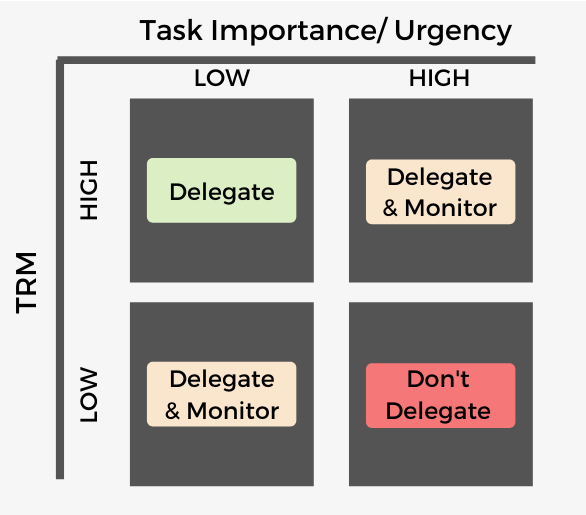# 15 Principles for Managing Up

## Metadata
- Author: [[Wes Kao]]
- Full Title: 15 Principles for Managing Up
- Category: #articles
- Summary: Managing up is a valuable skill that helps you build a strong relationship with your manager and enhances your career. It involves proactive communication, bringing solutions instead of complaints, and keeping your manager informed about important matters. Everyone, regardless of their position, can benefit from managing up to reduce decision fatigue and foster a collaborative work environment.
- URL: https://newsletter.weskao.com/p/15-principles-for-managing-up
## Highlights
- Managing up is a skill that will serve you starting today and throughout your career. ... • Embrace managing up.
• Focus on the punchline.
• Show your thought process.
• Flag potential issues.
• Bring solutions, not complaints.
• Use information hierarchy.
• Keep your manager in the loop.
• Are you being micromanaged, or do you need to communicate better?
• Over-communication might be the right amount.
• Proactively assert what to do.
• Don’t only ask questions. Share your point of view too.
• Anticipate questions.
• Know when to get out.
• Be explicit about what you need.
• Expect to manage up forever.
- 1. Embrace managing up.
2. Focus on the punchline.
3. Show your thought process.
4. Flag potential issues.
5. Bring solutions, not complaints.
6. Use information hierarchy.
7. Keep your manager in the loop.
8. Are you being micromanaged, or do you need to communicate better?
9. Over-communication might be the right amount.
10. Proactively assert what to do.
11. Don’t only ask questions. Share your point of view too.
12. Anticipate questions.
13. Know when to get out.
14. Be explicit about what you need.
15. Expect to manage up forever. ([View Highlight](https://read.readwise.io/read/01j3xpqpdebyyz3fh9tr5rzqqg))
- 1. Embrace managing up.
2. Focus on the punchline.
3. Show your thought process.
4. Flag potential issues.
5. Bring solutions, not complaints.
6. Use information hierarchy.
7. Keep your manager in the loop.
8. Are you being micromanaged, or do you need to communicate better?
9. Over-communication might be the right amount.
10. Proactively assert what to do.
11. Don’t only ask questions. Share your point of view too.
12. Anticipate questions.
13. Know when to get out.
14. Be explicit about what you need.
15. Expect to manage up forever. ([View Highlight](https://read.readwise.io/read/01j3xpr3gwxc3g73td6xnks305))
## New highlights added August 10, 2024 at 1:08 PM
- Managing up means being a competent operator who follows through, communicates appropriately, and drives toward business goals. ([View Highlight](https://read.readwise.io/read/01j4gac2ft2k7qswgwnwq8c0pp))
- 1. Embrace managing up. ... Your area of responsibility is 100% of your time, but it might be 10% of your manager’s time—they have other direct reports, they’re responsible for producing quality output themselves if they’re a player-coach, they’re starting to draft next quarter’s priorities, they’re preparing talking points for this week’s all-hands meeting, they’re shielding your team from lame requests, and more.
- **2.** F**ocus on the punchline.** ... Give enough context to avoid back-and-forth follow ups. Don’t be coy when you can be direct.
- 3. Show your thought process. ... This gives your manager an opportunity to point out if you’re missing context, if you’re operating under different assumptions, or if you’re making a logical leap you didn’t realize you were making. All of which leads to productive conversations that get you closer to the right decision.
- 4. Flag potential issues. ... You may think a problem is important/urgent, but through this process, learn from your manager why that problem is actually low frequency and low magnitude, and therefore is a lower priority than you thought. Or, it could be the other way around: You convince your manager that this issue is a bigger deal than they thought.
- 5. Bring solutions, not complaints. ... 🚫 “This process is messy and time-consuming. It’s so dumb. I hate doing this.”
✅ “This process isn’t working because X. I’d like to update to Y process instead, which should be cheaper/faster/easier. Let me know what I might be missing or if you agree to proceed.”
- 6. Use information hierarchy. ... This is especially useful for remote teams, where a hefty amounts information is communicated asynchronously and in writing. ... ✅ Action items or question at the top, context separately below
- 7. Keep your manager in the loop. ... • Say what you’re going to do.
• Do it.
• Tell your manager you’re doing it.
• Tell your manager you did it. ... If you have bad news, speak up at your first itch that something may be wrong. By the time it’s a red flag, you might have fewer options on how to solve it. A big part of keeping your manager in the loop is making sure they know the good, the bad, and the ugly. You don’t want them to be caught off guard when their manager (let’s say, the CEO) catches an issue they should have heard about from their own team (that’s you).
- 8. Are you being micromanaged, or do you need to communicate better? ... Poor communication skills and lack of managing up can lead to feeling micromanaged. ... For example, if you aren’t proactively sharing updates with your manager despite them begging to be kept in the loop, they have to follow up with you until they get what they need. ... They weren't micro-managing me. They were simply holding me accountable. The two are not the same thing. ... 🚫 “Micromanagers are the worst. I wish they'd get off my back and just let me do my job.”
✅ “I wonder what’s making them feel the need to micromanage. I'll review how I’m keeping them informed and align on what success looks like, so I can show I’m handling it. When we build up trust, the micromanaging should go down.” ... Also, side note: Your manager probably feels over-worked and wishes as much as you did (if not more) that they didn’t have to follow up so much. Most people don’t want to add more work to their plate. Your incentives are aligned in that they want to be able to trust you.
- 9. Over-communication might be the right amount. ... A more hands-on approach at first makes sense because both manager and direct report are establishing trust. Once trust is established, the manager usually eases off. ... The concept of task-relevant maturity is useful here. If you are skilled in an area, you likely need to give fewer updates about it. If you’re new, your manager may want to stay closer until you show you’ve got it under control. ... > *"How often you monitor should not be based on what you believe your subordinate can do in general, but on his experience with a specific task and his prior performance with it—his task relevant maturity... As the subordinate's work improves over time, you should respond with a corresponding reduction in the intensity of the monitoring."*
[

](https://substackcdn.com/image/fetch/f_auto,q_auto:good,fl_progressive:steep/https%3A%2F%2Fsubstack-post-media.s3.amazonaws.com%2Fpublic%2Fimages%2F0f4c30b4-738a-4d29-b3be-02d2b2f0c25d_586x515.png) ... I received my first feedback to communicate better laterally, upward and downward, I understood what it means to be an effective team player and leader. I started proactively communicating, with slightly different styles depending on the audience. The result was I became my own boss in a way,
- 10. Proactively assert what to do. ... Suggest next steps—don’t wait to be told what to do. Almost every leader instinctively asks, “Okay, so what? What should we do with this information?” By making a recommendation, you take on some of the cognitive load of decision-making. ... You want your manager to poke holes, share a different perspective, and point out areas of risk because it will help you thrash early and prevent avoidable mistakes that will slow you down. When you do take action, you’ll be able to move faster and make the most of your efforts.
- 11. Don’t only ask questions. Share your point of view too. ... 🚫 “Why? Why again? Why again? [Mic drop]”
✅ “Why? My initial POV is [insight and rationale, patterns you’re noticing]. I'm not 100% sure yet, so I’m curious how you’re thinking about it, where you agree, where you see gaps.”
- **12. Anticipate questions.** ... If you can guess what your manager or colleagues will ask about, address it before they ask. This saves at least one cycle of back and forth, which adds up. When you consider the issue from their point of view, it helps you get their buy-in too.
- 13. Know when to get out. ... “Managing up works, but not in a toxic environment. I'll find an organization that’s a better fit and manage up to a manager who’s eager to work with me.”
- 14. Be explicit about what you need. ... Are you looking for a thought partner to help you shape a new, fuzzy idea? Are you looking for emotional support and someone to listen? What kind of feedback would be most helpful? Share what you need specifically because you’ll be more likely to get it. ... 🚫 “Hey, can you take a look?
✅ “Hey, can you take a look? I’m looking for directional feedback on whether it makes sense to go down this path, no need for line edits yet.”
✅ “Can you approve this by 3pm today?”
✅ “I have updates on X. Let’s discuss by tomorrow EOD because Y.”
- 15. Expect to manage up forever. ... You might assume senior leaders and executives are “too trusted" to need to manage up. There's no such thing as too much trust. Every single leader has to manage up. Counterintuitively, senior leaders and executives are often best at it. They got to where they are because they know how to anticipate needs, communicate persuasively, and keep people in the loop.